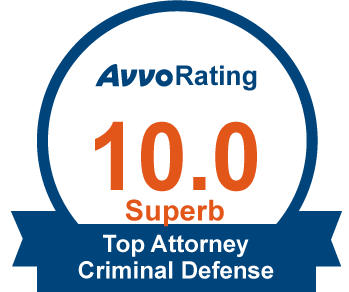If you or your loved has been charged with a hit and run crime, secure the services of an experienced criminal defense attorney immediately. Time is of the essence if you’re to avoid the severe penalties that a conviction for this crime can bring. In California, a hit and run driver can be charged with an infraction, a felony or a misdemeanor for leaving the scene of an accident without doing due diligence. The nature of the crime and the charges will depend on whether there was injury, death or property damage during the accident.
At Long Beach Criminal Attorney, we have intricate knowledge of the California hit and run statutes and have successfully handled numerous defense cases for our clients in the greater Long Beach area. We’ll analyze the facts of your case and build a personalized, solid defense to challenge the arguments and evidence of the prosecutor in order to achieve a favorable outcome to your case. To learn more or schedule a free consultation on your hit and run case, please contact us at 562-308-7807 or fill our online contact form.
Your Responsibility as a Driver Involved in an Accident
California law states that a motorcycle, car or truck driver must act responsibly whenever they are involved in a traffic accident. As provided under California Vehicle Code 20001 and California Vehicle Code 20002, you must stop your vehicle if:
- You hit a moving or parked vehicle
- You hit a person, an animal or any type of property
- A person is injured or severely injured
- Your car kills someone in an accident
Additionally, any driver involved in an accident with a parked vehicle or causes damage to property should search for and inform the owner of the property or vehicle of what has transpired. If you’re unable to locate the owner, you must leave behind a clear note in a visible place indicating your name, address and detailed explanation of what transpired.
If you’re involved in a traffic accident while driving, you must stop and identify yourself to the driver or passenger(s) of the other vehicle involved, regardless of whether the accident caused injury or death. You must also provide detailed information to the any police officer on the scene. Additionally, you are expected to provide reasonable assistance to the victims. You can either call an ambulance or drive the injured to the nearest hospital if the injured person needs immediate medical attention or he or she asks you to do so
Prosecution of California’s Hit and Run Charges
For you to be convicted for a hit and run in California, the prosecutor must be able to prove the following elements of the crime:
- You were the driver at the time of the accident
- The accident resulted in damage to another individual’s property
- You were aware either that there was property damage or that there was a high probability the accident damaged someone else’s property
- That you willfully refused to perform any of the duties required of you as the driver involved in a traffic accident. Let’s look at an example:
John was involved in a fender bender but from the look of things, it was the mistake of the other driver. John’s car suffers a minor scratch. John sees that the other driver, Linda, is an old lady driving an old, beat-up vehicle that has been damaged severely following the accident. She seems upset and afraid and because John does not want to push the burden of fixing his car on Linda, he feels sorry and drives away from the scene without talking to Linda or giving her his identifying information. In this case, John was not at fault and his intentions for leaving the scene were good. But he failed to act in accordance to Vehicle Code 20002 VC and this means that he can be prosecuted for a misdemeanor hit and run.
It’s worth noting that you will only be able to avoid conviction if you performed all the duties provided above. This means that you may be found guilty if you fail to perform some of the duties. For instance, if you stop after the accident and provide reasonable assistance to those injured but fail to provide your identification information, you may still face conviction. Conversely, if you fled the scene and then decided to go back and provided the required information, the prosecutor may be lenient with you but this will depend on your criminal history and driving record.
Possible Hit and Run Penalties
Hit and run offenses involving only property damage are always a misdemeanor and are charged under VC 20002. If convicted under this statue, you face a jail term of up to 6 months and a fine of up to $1,000.
Felony hit and run involving non-serious, non-permanent injuries could attract one or all of the following penalties:
- A maximum of one year in county jail particularly if your case was categorized as a misdemeanor offense
- 16 months or 2 or 3 years in California state prison if your offense was classified as a felony
- A fine between $1,000 and $10,000
- Restitution to the victims, and
- 2 points on the driving record
For felony hit and run convictions involving serious, permanent injury or death, the accused may be subjected to one or all of the following penalties:
- $1,000 to $10,000 in fine
- A county jail term of between 3 months to 1 year for a misdemeanor offense
- 2, 3 or 4 years in state prison for felony conviction
- Restitution to the victims
- 2 points on your driving record
Sentence Enhancement
There are two most common circumstances under which a person may be subjected to an enhanced sentence in a hit and run case. These include:
- When the driver failed to stop and also committed vehicular manslaughter. This is considered a felony under CVC 20001C and attracts additional 5 years in California state prison.
- The driver did not only engage in a hit and run but was also under the influence of an intoxicating drug or alcohol at the time of the accident. This can attract a penalty of up to 6 months in jail and a court fine ranging between $390 and $1,000. Your driver’s license can also be suspended for a duration of between 6-10 months.
Legal Defenses to Hit and Run Charges
Since accidents are different, defending a California hit and run charge will be determined by the details of your case. It's possible to develop a strong defense if the prosecution cannot establish all the elements of the crime. This means that there's a likelihood of your case being dismissed. At Long Beach Criminal Attorney, we have successfully defended many other drivers accused of hit and run crimes. When you retain our hit and run attorneys, the first step will be to thoroughly examine all the evidence against you in order to identify the weakness in the case presented against you. We will develop a strong defense strategy to challenge and down the charges against you.
Here are some of the possible legal defenses that we can apply to help win your case.
You were not the driver of the vehicle involved in the accident
The law provides that only the person who was driving at the time of the accident can be prosecuted. If your attorney can prove that another individual was driving the car at the time of the crash, you cannot be held liable for the damages.
You were unable to offer reasonable assistance
You cannot be held criminally liable for the hit and run incident if you were prevented from providing reasonable assistance to the injured victims. For instance, the accident might have taken place in a remote road and several other individuals were seriously injured. You could have helped but then you were trapped in your car by a faulty seatbelt. One of the victims dies and out of confusion, you drive away just to seek help for the other individuals. In this case, you were prevented from offering assistance to the injured victims and your attorney can argue that you could not offer personal help and that’s why you left the scene to seek help.
You did not willfully leave the accident scene
You can have a successful hit and run defense if your attorney is able to convince the court that you did not intentionally leave the accident scene. For instance, if you were unconscious after the collision and another person drove you to the hospital for medical assistance. Even though you were the driver at the time of the accident, you did not fail to stop on purpose. This, therefore, means that you cannot be held culpable for fleeing the accident scene.
You were not aware of the damage caused by the accident
This element of crime remains open to various interpretations by different legal experts. Long Beach Criminal Attorney may be able to demonstrate that you were not aware of the damages that resulted from the accident. A good example is when you have a rear-end collision with another vehicle at a stop light. Both you and the other driver stop but could not notice any damage at the moment. So you drive on without exchanging your contact information as provided by the law. Later on, the driver realizes that there are damages to his or her car, reports to the police and they end up charging you with hit and run. In such a situation, you can have a valid defense because you had no knowledge of any damage at the time of accident.
You did not intentionally fail to provide contact information
Under California Vehicle Code 20001 and 20002 the driver of a vehicle involved in a traffic collision must exchange information with the other driver(s) or passenger(s) involved as well as law enforcement on the scene. This information should include your name, vehicle registration number, and address. Failing to do this intentionally is a criminal offense. But you can have a valid hit and run defense if you were unable to provide the required information for reasons beyond your control. For instance, you become incapacitated in the course of the accident and one of the individuals at the scene fears for your safety and decides to drive you away to the hospital for immediate medical attention. You were unable to provide the required information to the other parties involved. In this case, you may have a valid defense because your failure to exchange information wasn’t intentional.
You were not aware of any injury
You must have known or reasonably should have known that the accident caused injury or death. In most cases, an injury may not be immediately apparent after the accident. Your attorney can argue that you were not aware of any injury when you left the accident scene. For instance, you bump into another car and no property was damaged. You stop and exchange information with the other parties involved but no one complains about any injury. You decide to move on and the following day, the driver of the other vehicle complains about knee pain. He goes to the doctor and a slight tear in a ligament is discovered but there were no visible injuries. Your criminal defense attorney can argue that when you stopped your car and exchanged information with the other driver, you had no knowledge of the injury and it was not reasonable that you should have known of the injury.
Contact a Seasoned Long Beach Criminal Attorney for Assistance
A hit and run conviction is an extremely serious matter and should not be taken lightly. You need a criminal defense lawyer who has a deep understanding of the California Vehicle Code and can help you gather the necessary evidence and witnesses that can help challenge the prosecution’s case. At Long Beach Criminal Attorney, we will visit the scene of the accident, work with accident reconstruction experts, obtain photos of the scene, and coach you on what to say and how to act to avoid incriminating yourself. We are committed to achieving the best possible outcome to your case and our goal is to leave no legal stone unturned. Call us anytime 24/7 at 562-308-7807 for a free, no-obligation consultation with one of our seasoned hit and run attorneys.








